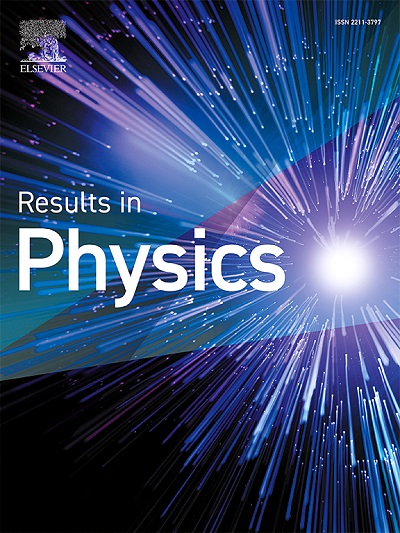Zintl germanides for thermoelectric applications: Insights from DFT and Boltzmann transport theory
IF 4.4
2区 物理与天体物理
Q2 MATERIALS SCIENCE, MULTIDISCIPLINARY
引用次数: 0
Abstract
We present a comprehensive theoretical investigation of the electronic and thermoelectric properties of Zintl germanides AeNiGe (Ae = Mg, Sr, Ba) using density functional theory (DFT) combined with Boltzmann transport theory. Our calculations reveal that all three compounds exhibit metallic behavior, with notable differences in their electronic band structures and density of states. Analysis of the partial density of states shows that the bands near the Fermi level are primarily composed of Ni-d and Ge-p states, with varying contributions from the alkaline earth metals’ orbitals. The thermoelectric properties, calculated using the BoltzTraP code within the relaxation time approximation, indicate a strong dependence on temperature and chemical potential. Ba- and Sr-based compounds demonstrate superior thermoelectric performance compared to Mg-based counterparts, achieving maximum Seebeck coefficients of approximately 40 µV/K at 450 K under negative chemical potentials (−2.00 eV). Additionally, Ba- and Sr-based materials exhibit significantly lower thermal conductivity (below 1 W/mK at high temperatures) compared to Mg-based materials (up to 7 W/mK). These findings suggest that BaNiGe and SrNiGe are promising candidates for thermoelectric applications, offering an optimal balance of high Seebeck coefficient, moderate electrical conductivity, and low thermal conductivity. Our results provide valuable insights for the design and ptimization of Zintl-based thermoelectric materials for energy conversion applications.
求助全文
约1分钟内获得全文
求助全文
来源期刊

Results in Physics
MATERIALS SCIENCE, MULTIDISCIPLINARYPHYSIC-PHYSICS, MULTIDISCIPLINARY
CiteScore
8.70
自引率
9.40%
发文量
754
审稿时长
50 days
期刊介绍:
Results in Physics is an open access journal offering authors the opportunity to publish in all fundamental and interdisciplinary areas of physics, materials science, and applied physics. Papers of a theoretical, computational, and experimental nature are all welcome. Results in Physics accepts papers that are scientifically sound, technically correct and provide valuable new knowledge to the physics community. Topics such as three-dimensional flow and magnetohydrodynamics are not within the scope of Results in Physics.
Results in Physics welcomes three types of papers:
1. Full research papers
2. Microarticles: very short papers, no longer than two pages. They may consist of a single, but well-described piece of information, such as:
- Data and/or a plot plus a description
- Description of a new method or instrumentation
- Negative results
- Concept or design study
3. Letters to the Editor: Letters discussing a recent article published in Results in Physics are welcome. These are objective, constructive, or educational critiques of papers published in Results in Physics. Accepted letters will be sent to the author of the original paper for a response. Each letter and response is published together. Letters should be received within 8 weeks of the article''s publication. They should not exceed 750 words of text and 10 references.
 求助内容:
求助内容: 应助结果提醒方式:
应助结果提醒方式:


